Strengthening your ARF’s firewall

Over the years, I’ve been asked questions by modelers who fly smaller glow-powered models and wanted to step up to giant scale. They often feel intimidated by the building and assembling required for the larger airplanes, especially when it comes to installing a gasoline engine. This month, let’s talk about gasoline engine installations.
Proper AdhesivesUsing the correct glue for any application is important, and when working with gas models, I highly recommend 30-minute epoxy. This ensures a strong bond between the firewall and the engine-box structure. Always be sure to mix two-part epoxy properly. If you mix in too much hardener, the epoxy may set too quickly and won’t produce a strong bond. On the other hand, if you use too much resin, the epoxy may not cure at all. Most epoxy glues require a 50/50 mix of resin and hardener (part A and part B); but to be safe, always check the instructions. There are some brands that require other mixing ratios to cure properly. Mix up a small test batch first to see how long your brand takes to fully cure. I have seen airplanes crash because their firewall glue joints failed in flight. Do it right, and don’t guess!
Firewall Reinforcement
Many ARF models today include factoryinstalled firewalls, which leaves little to do during the building process. Although they may seem plenty strong as designed, I like to add reinforcement to key high-stress areas, especially the firewall.
Denne historien er fra October 2019-utgaven av Model Airplane News.
Start din 7-dagers gratis prøveperiode på Magzter GOLD for å få tilgang til tusenvis av utvalgte premiumhistorier og 9000+ magasiner og aviser.
Allerede abonnent ? Logg på
Denne historien er fra October 2019-utgaven av Model Airplane News.
Start din 7-dagers gratis prøveperiode på Magzter GOLD for å få tilgang til tusenvis av utvalgte premiumhistorier og 9000+ magasiner og aviser.
Allerede abonnent? Logg på
Legend Hobby / Seagull Models - Cessna Grand Caravan 208
The Cessna Grand Caravan 208 is a legend in aviation circles. A single engine utility aircraft that punches up with capabilities that rival many twin engine aircraft in its class. Its seemingly simple configuration belies its near extreme utility.
PROPER CG LOCATION FOR AEROBATICS
If you are getting into aerobatics and are starting to perform more advanced maneuvers, it is time to discuss ways you can not only become a better pilot, but how you can also improve the flight characteristics of your airplanes.
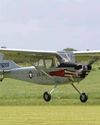
Legend Hobby 13-Foot L-19 Bird Dog/ Cessna O-1
This famous multi-mission single engine observation aircraft served from 1950-1974. From calling out target locations to providing intel/recon information, the Bird Dog was a valued asset in both the Korean War and Vietnam.
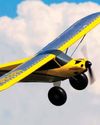
EARN YOUR WINGS
10 Tips for First-Flight Success
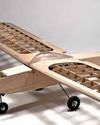
Old School Model Works Fifty Six
The Fifty Six takes its design cues from the original .09- to .15-size Carl Goldberg Falcon 56 of the 1960s. Reworked to incorporate modern, lasercut techniques to make kit building better than ever.
FLYING TWINS Multi-engine warbirds made easy
Let’s face it, there’s just something extra special about twin-engine RC aircraft. Most modelers stop what they’re doing when a twin fires up on the flightline.
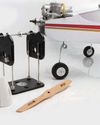
HOW TO BALANCE PROPELLERS
Four easy steps to increase performance and reduce vibration
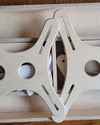
PRODUCT REVIEW: RC PLANE STANDS BENCHTOP MODEL
I’m a sucker for shop stuff. I buy tools I will probably never use just because they are cool, or I might need to use them someday. When Glen from RC Plane Stands reached out about a review, however, I knew as soon as I browsed their website that I would be receiving something I would use a lot, maybe even daily.
SPIRIT OF RHINEBECK AWARD WINNER
A close up of Norman Malinowski’s 1/3-scale Albatros
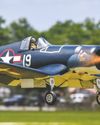
CENTER OF GRAVITY BASICS
The secret to a plane that flies well